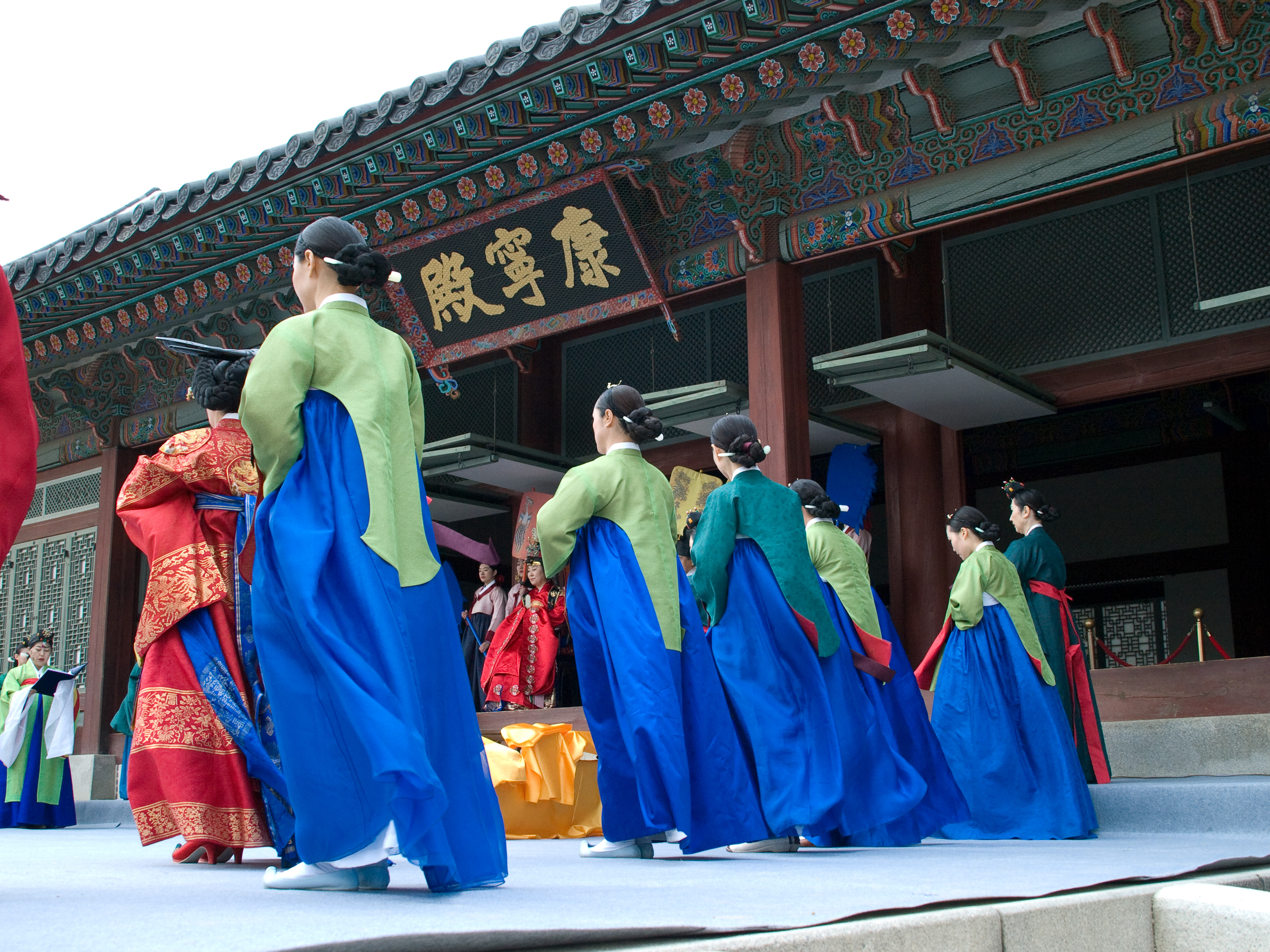Styles and titles in the Joseon Dynasty on:
[Wikipedia]
[Google]
[Amazon]
During the

Joseon Dynasty
Joseon (; ; Middle Korean: 됴ᇢ〯션〮 Dyǒw syéon or 됴ᇢ〯션〯 Dyǒw syěon), officially the Great Joseon (; ), was the last dynastic kingdom of Korea, lasting just over 500 years. It was founded by Yi Seong-gye in July 1392 and r ...
royal titles and styles (forms of address) had been extensive and complex. The general title of the king was ''wang'' (왕, 王) until Gojong of Korea
Gojong (; 8 September 1852 – 21 January 1919) was the monarch of Korea from 1864 to 1907. He reigned as the last King of Joseon from 1864 to 1897, and as the first Emperor of Korea from 1897 until his forced abdication in 1907. He is known ...
crowned himself ''hwangje'' (황제, 皇帝), or emperor, a title that was only allowed for Chinese emperors. Official titles came with official forms of address, depending on who the addressee was and by whom he or she was addressed.
Royal family
Naming
Rulers in Korea (following Chinese customs) had several names, changing with their titles. Sons were given children's names, and when they were appointed crown prince, they were given an adult name and the crown prince name. When they became king, they were addressed as such, personal names were not used. After the death of a king, he was given several names. One is thetemple name
Temple names are posthumous titles accorded to monarchs of the Sinosphere for the purpose of ancestor worship. The practice of honoring monarchs with temple names began during the Shang dynasty in China and had since been adopted by other dyna ...
(묘호, 廟號; ''myoho''), which he was given when his spirit tablet
A spirit tablet, memorial tablet, or ancestral tablet, is a placard used to designate the seat of a deity or past ancestor as well as to enclose it. The name of the deity or past ancestor is usually inscribed onto the tablet. With origins in tr ...
was placed at Jongmyo Shrine. This is the name by which historians usually refer to Joseon kings. The ''myoho'' could end in either ''jo'' (조, 祖, "progenitor") or ''jong'' (종, 宗, "ancestor"). The preceding syllable was an adjective suitable for the king. The other name was the posthumous name
A posthumous name is an honorary name given mostly to the notable dead in East Asian culture. It is predominantly practiced in East Asian countries such as China, Korea, Vietnam, Japan, and Thailand. Reflecting on the person's accomplishm ...
(시호, 諡號, siho). This is a longer name, made up of adjectives characteristic of the king's rule. For example, Gyeongjong of Joseon's posthumous name was King Deokmun Ikmu Sunin Seonhyo the Great (덕문익무순인선효대왕, 德文翼武純仁宣孝大王), while his temple name was Gyeongjong (경종, 景宗).
Titles and styles
Forms of address were combined with names, titles or both, for example: * ''Jusang jeonha'' 주상 전하 (His Majesty the King) *''Jungjeon mama'' 중전 마마 (Her Royal Highness the Queen) * ''Seja jeoha'' 세자 저하 (His Royal Highness
Royal Highness is a style used to address or refer to some members of royal families, usually princes or princesses. Monarchs and their consorts are usually styled ''Majesty''.
When used as a direct form of address, spoken or written, it t ...
the Crown Prince)
*''Daegun daegam'' 대군 대감 (His Excellency the Grand Prince)
* ''Gongju agassi'' n childhood
N, or n, is the fourteenth letter in the Latin alphabet, used in the modern English alphabet, the alphabets of other western European languages and others worldwide. Its name in English is ''en'' (pronounced ), plural ''ens''.
History
...
공주 아가씨 (Her Young Highness the Princess) then ''Gongju mama'' 공주 마마 n adulthood(Her Royal Highness the Princess)
Consorts and concubines
Consorts and concubines of the king in the harem (''hugung'', 후궁/ 後宮) had a certain rank, according to which their titles and forms of address were formulated. Titles came with the form of address of ''mama'' (마마 / 媽媽). Ranks in order after the Queen Consort:Royal court

Officials
See also
*Naehun
''Naehun'' (Instructions for Women, 내훈, 內訓) is a guidebook for women and the first known book written by a female author in Korea. It is one of the most representative books that reflects the social construction of gender and sexuality ba ...
References
{{List of titles and honours of the Countries Crown Joseon dynasty Royal titles